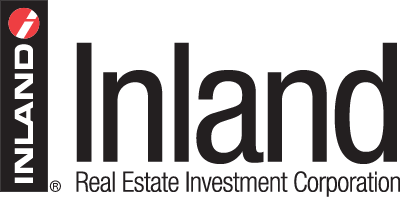Owners of pass-through entities often encounter capital gains when selling an asset. These gains are typically reported on a Schedule K-1 and can result in a significant tax event. However, for those in partnerships receiving pass-through income and capital gains via K-1s, the Qualified Opportunity Zones (QOZ) program offer a compelling strategy to defer current capital gains and potentially eliminating future capital gains realized from a QOZ investment.
What is a QOZ?
This sophisticated investment program was established within the Tax Cuts and Jobs Act of 2017. It encourages investments into the development of economically distressed communities by offering substantial tax benefits to those who participate. Under the QOZ program, investors can defer capital gains until December 31, 2026 by reinvesting those gains into a Qualified Opportunity Fund (QOF). Moreover, if the QOF investment is held for at least 10 years, any gains recognized from the QOF investment may be free of capital gains tax.
Key Benefits of QOZs:
-
Capital Gains Deferral: Business owners who sell a business may defer paying capital gains tax by reinvesting into a QOF, until December 31, 2026. However, there is ongoing legislative discussions about modifying the QOZ program, potentially extending the deferral deadline until December 31, 2033 (starting for investments made in 2027).
-
Potential Elimination of Future Tax Burden: If the QOF investment is held for at least 10 years, any appreciation on that investment may be excluded from federal capital gains tax. This may be one of the most powerful long-term tax advantages of the QOZ program.
Typically to receive the QOZ tax benefits, gains must be reinvested within 180 days of the realized gain. However, in 2019 the U.S. Treasury Department released final regulations which added flexibility for K-1 partnerships:
- 180 days starts with the date the asset is sold
- 180 days begins on the last day of the partnership’s taxable year (December 31st for calendar-year partnerships)
- 180 days starts on the date the partnership’s tax return is due, without any extension (March 15th for calendar-year partnership)
K-1: Calendar-Year Partnership Reinvestment Hypothetical Example1
To clearly illustrate the tax-advantages of a K-1 partnership QOF investment, let’s review the hypothetical example below.
Nearly a decade ago, a business owner started a business with no basis, which has now appreciated in value to $1 million. On July 1, 2024, the owner sells the business for $1 million. If the investor chooses to reinvest the gains into a QOF, there are three options for calculating the 180-day window.
The investor chooses the third option –- to start the 180-day window when the partnership’s tax return is due on March 15, 2025 (without any extension, for calendar-year partnerships), giving the investor until September 11, 2025 (March 15 + 180 days) to reinvest. Thus, payment of capital gains tax on the $1 million in capital gains would be deferred until December 31, 2026. Further, if the owner continues to hold the investment in the QOF for 10 years, they are expected to have no tax obligation on the gain realized in the QOF investment.

After-Tax Hypothetical Scenario2,3,4,5

If the Investor holds an interest in a QOF for at least 10 years then, in connection with the sale of such interest, the investor’s basis in such interest will be equal to the fair market value of such interest on the date it is sold if a specified tax election is made, thereby eliminating any federal income tax with respect to any appreciation in the value of the interest.
QOZs offer a powerful and flexible tax planning strategy for business owners seeking to defer, and potentially eliminate future capital gains tax realized in a QOF investment. To unlock the full benefits of this program, it’s essential to understand QOZ guidelines, adhere to the 180-day window, and commit to holding the QOF investment for at least 10 years. When executed properly, this strategy can significantly enhance after-tax returns while supporting long-term growth in underserved communities.
1 This hypothetical example and any accompany graphics or information related thereto have been prepared for information purposes only, and are not intended, and should be construed, as tax, accounting or legal advice to any potential investor. All prospective investors are strongly encouraged to consult with and rely on their own tax, legal, accounting, financial or other professionals.
2 Illustration assumes investor is subject to top marginal U.S. federal income tax rate of 20% on long-term capital gains for individuals, net investment income tax of 3.8% and state tax of 6.2% for a total tax liability of 30%. This illustration assumes that no brokerage or investment advisory fees are accounted for with respect to Non-Qualified Opportunity Fund example and assumes that no fees are due to the asset manager and its affiliates and no sales commissions, deal fees or placement agent fees are accounted for with respect to Qualified Opportunity Fund example. This communication is not intended as tax advice, and investors should consult with their own tax advisors regarding an investment in a Qualified Opportunity Fund.
3 Illustration assumes that Qualified Opportunity Zone investor is a resident of a state that conforms with QOZ Program.
4 Example assumes investor does not pass away during 10-year period. If investor were to pass away, heirs receive a step-up in basis in Non-Qualified Opportunity Fund example and a carryover basis for Qualified Opportunity Fund example.
5 Assumes that investor has no capital losses to reduce such capital gain and refers to inclusion of the original, invested capital gains in such investor’s taxable income on December 31, 2026.
